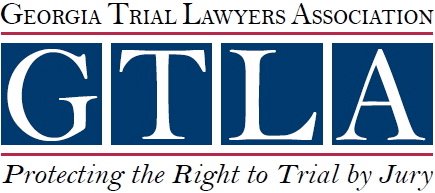When pedestrians navigate the busy streets and sidewalks of Georgia, they often assume that they are afforded a higher level of protection by law. After all, pedestrians are the most vulnerable users of our roadways, lacking the physical protection that vehicles provide. However, pedestrian accidents do happen, and when they do, the legal landscape becomes crucial for determining fault and pursuing compensation. One of the key legal principles in these cases is comparative negligence, a doctrine that plays a significant role in how pedestrian accident claims are resolved in Georgia.




What is Comparative Negligence?
Comparative negligence is a legal doctrine used to allocate fault among parties involved in an accident. In Georgia, this principle is applied to pedestrian accidents to determine the extent to which each party contributed to the incident. This allocation of fault can significantly impact the compensation a pedestrian can receive following an accident. Understanding how comparative negligence works in Georgia is essential for anyone involved in a pedestrian accident, whether as a victim or as a driver.
Georgia follows a modified comparative negligence rule, which means that a pedestrian can recover damages only if they are less than 50% at fault for the accident. If a pedestrian is found to be 50% or more responsible, they are barred from recovering any compensation. This rule underscores the importance of establishing the exact degree of fault in pedestrian accident cases, as even a slight increase in the assigned percentage of negligence can dramatically affect the outcome of a claim.
In practice, this means that if a pedestrian is found to be partially at fault for their injuries, the amount of compensation they can receive will be reduced by their percentage of fault. For instance, if a pedestrian is awarded $100,000 in damages but is found to be 20% at fault, their compensation would be reduced by $20,000, resulting in a final award of $80,000. This reduction underscores the importance of meticulously investigating and presenting evidence in pedestrian accident cases to ensure that fault is accurately apportioned.
Factors in Determining Fault
Several factors can influence the determination of fault in pedestrian accidents. These include the behavior of the pedestrian at the time of the accident, such as whether they were crossing the street illegally, distracted by a mobile device, or under the influence of alcohol or drugs. Additionally, the actions of the driver are scrutinized to assess whether they were speeding, distracted, or driving under the influence. Witness statements, traffic camera footage, and police reports are critical pieces of evidence that can help establish the circumstances leading to the accident and the degree of fault for each party.
Pedestrian behavior is a crucial aspect of comparative negligence analysis. Pedestrians are expected to exercise reasonable care for their safety, such as using crosswalks, obeying traffic signals, and being alert to their surroundings. Failure to adhere to these responsibilities can result in a finding of partial fault. For example, if a pedestrian darts into the street without looking and is struck by a vehicle, they may be found to have contributed significantly to their injuries. Conversely, if a pedestrian is lawfully crossing at a crosswalk and is hit by a driver running a red light, the driver would likely be found primarily at fault.
Drivers also have a duty to exercise reasonable care to avoid hitting pedestrians. This duty includes driving at a safe speed, being vigilant for pedestrians, especially in areas with heavy foot traffic, and obeying traffic laws. A driver who fails to uphold these responsibilities may be found largely at fault for an accident. However, even if a driver is mostly at fault, a pedestrian’s actions can still reduce their potential compensation if those actions contributed to the accident.
The process of determining fault and applying comparative negligence can be complex and contentious. Insurance companies often conduct their investigations and may attempt to assign a higher percentage of fault to the pedestrian to reduce the amount they must pay in claims. Therefore, having legal representation is crucial for pedestrians seeking compensation for their injuries. An experienced attorney can gather and present evidence, negotiate with insurance companies, and advocate for a fair allocation of fault that reflects the true circumstances of the accident.
The Implications of Comparative Negligence
Beyond the immediate aftermath of the accident, understanding comparative negligence has long-term implications for injured pedestrians. Medical bills, lost wages, and ongoing rehabilitation costs can place a significant financial burden on accident victims. Ensuring that fault is accurately determined and that compensation reflects the severity of the injuries and the degree of fault can make a substantial difference in the victim’s ability to recover and move forward with their life.
In some cases, pedestrian accident claims may proceed to court if a fair settlement cannot be reached through negotiations. In such instances, the concept of comparative negligence will be central to the arguments presented by both sides. The court will examine the evidence, including witness testimonies, analyses, and other relevant information, to determine the degree of fault for each party. The final decision will then be reflected in the award of damages, which will be adjusted according to the established percentages of fault.
The Statute of Limitations
It is also important to note that Georgia’s statute of limitations imposes a time limit on filing a personal injury claim. Pedestrian accident victims generally have two years from the date of the accident to file a lawsuit. Failing to do so within this timeframe can result in losing the right to seek compensation. Therefore, it is crucial for injured pedestrians to act promptly and seek legal advice as soon as possible to ensure their rights are protected.
Hiring a Personal Injury Attorney How Long Will a Personal Injury Case Take?Related Videos
Contact Us Today
If you or a loved one has been involved in a pedestrian accident in Georgia, it is vital to understand your rights and the impact of comparative negligence on your case. Princenthal, May & Wilson, LLC is dedicated to helping accident victims navigate these challenging legal waters. Our experienced team is committed to ensuring that you receive fair treatment and just compensation for your injuries. Contact us today to discuss your case and learn how we can assist you in achieving the best possible outcome. Your path to recovery starts with a single step — reach out to Princenthal, May & Wilson, LLC for the guidance and support you deserve.





